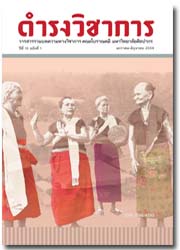The Unfolding of Myth of the ‘Tribal’: A Case of the Nagas
Keywords:
Identity politics, India’s North East, myth, visual imagery, The Nagas and NagalandAbstract
Tribe is a social construct which has no constant meaning. While the word ‘tribe’ is used to describe a group of people, the understanding of this narration is very often delusional, leading people to believe that the concept associated with it is fixed and rigid. The label of tribal is repeatedly understood to mean primitive and backward and is attached enduringly to numerous communities who were unable to control their mode of production, particularly during post-colonial phase. In this paper, I contend that ‘tribal’ cannot be generalized as a homogenous social category. If we regard a tribe as a social group that has certain territory, simple political organization, common religious beliefs and single spoken language, with respect to the Nagas, this is not the case. Likewise, this paper will take into consideration the political history and ethnohistory of the Nagas so as to identify the construction and changing patterns of Naga culture and identity politics. In this review, the rising phenomenon of identity politics of the Nagas will be closely scrutinized through the circulation of visual culture specifically tied in with features of ethnic interest as well as the feminine body. Conclusively, the paper suggests that the Nagas are forced into a situation where they have had to preserve the distinctiveness of their culture, despite or because of manipulation and threats imposed by primitive stigmas and labels.
References
Abbi A., 2008. “Tribal Languages.” In B.B. Kachru, Y. Kachru & S.N. Sridhar (eds.), Language in South Asia (pp. 153-174). Cambridge: Cambridge University Press.
Appadurai A., 1988. “Putting Hierarchy in Its Place.” Cultural Anthropology 3 (1), Place and Voice in Anthropological Theory: 36-49.
Baruah S., 2015. “Reading Fürer-Haimendorf in North-East India.” Economic and Political Weekly 50 (14): 39-44.
Buongpui R.L., 2013. “Gender Relations and the Web of Traditions in Northeast India.” The NEHU Journal XI (2): 73-81.
Corry S., 2011. Tribal Peoples for Tomorrow’s World. London: Survival International.
Elwin V., 1959. India’s North-east Frontier in the Nineteenth Century. London: Oxford University Press.
Fernandes W., 2003. “Assam Adivasis: Identity Issues and Liberation.” Vidyajyoti Journal of Theological Reflection (February).
Gait E.A., 1906. A History of Assam. Calcutta: Thacker, Spink & Co.
Geertz C., 1973. The Interpretation of Culture. New York: Basic Book Inc.
Green E.D., 2005 “What is an Ethnic Group? Political Economy, Constructivism and the Common Language Approach to Ethnicity.” DESTIN Working Paper. Development Studies Institute, London School of Economics and Political Science, UK.
Guha R., 2008. India After Gandhi: The History of the World’s Largest Democracy. India: Picador.
Hutton J.H., 1921. The Angami Nagas: With Some Notes on Neighbouring Tribes. London: Macmillan.
Jacobs J., Macfarlane A., Harrison S. & Herle A., 1998. The Nagas: Hill Peoples in Northeast India. London: Thames & Hudson Ltd.
McDuie-Ra D., 2012. Northeast Migrants in Delhi: Race, Refuge, and Retail. Amsterdam: Amsterdam University Press.
Ramp Magazine, 2014-2015. 4th Issue.
Singh C., 2004. Naga Politics: A Critical Account. New Delhi: Mittal Publication.
Wouters J.J.P., 2014. “Performing Democracy in Nagaland: Past Polities and Present Politics.” Economic and Political Weekly XLIX (16): 59-66.
Wouters J.J.P. & Tanka B.S., 2013. The “Indian Face,” India’s Northeast, and the “The Idea of India”. Asian Anthropology 12 (2): 126-140
SOAS, 2014. The Fürer-Haimendorf Archive. Retrieved October 4, 2014, from https://www.soas.ac.uk/furer-haimendorf/archive/
SOAS, 2015. Gallery: Head-receiving Dance. Retrieved April 4, 2015, from Digital Archives and Special Collection: http://digital.info.soas.ac.uk/cgi/gallery/68
Downloads
Published
Issue
Section
License
บทความนี้เป็นผลงานของข้าพเจ้าแต่เพียงผู้เดียว และ/หรือเป็นผลงานของข้าพเจ้าและผู้ร่วมงาน ตามชื่อที่ระบุในบทความจริง และเป็นผลงานที่มิได้ถูกนำเสนอหรือตีพิมพ์ที่ใดมาก่อน





